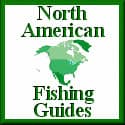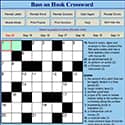Bass on Hook is Supported by our readers. As an Amazon Associate We earn commissions from qualifying purchases. For more informtion read our Amazon Affiliate Disclosure and Affiliate Disclosure Policies.
Is Bigger Always Better When Selecting Your Bait
By Nick Ruiz
I'm pretty much willing to bet that nearly every angler reading this article at one point or another has heard the cliché "Bigger baits catch bigger fish".
But does this hold true in every situation?
As a Long Island angler I seriously doubt it!
Time to face facts, bigger isn't always better when selecting your bait.
So with that in mind we ask ourselves, what are we left with?
Answer: finesse!
Finesse Will Outfish Bigger Bait Everytime
Finesse is a word that many long time traditionalist bass anglers cringe at the sound of and has brought about a revolution in the way many anglers approach bass fishing.
Lighter lines, lighter lures and lighter rod setups have all taken the bassin' market by storm and as we speak new products are added to the all ready enormous line up.
Another interesting point of fact is that many of the new wave finesse lures that are being bought up by the zillions have been on the market just as long if not longer as their larger counter parts.
Also in many cases they are the same lures that anglers have been using and trusting, just in a smaller size.
Example, the Rapala floating minnow which was in existence well before the Allies took Normandy has been catching fish for nearly eight decades.
It has been produced in sizes ranging from just over an inch to the well known magnum muskie plugs for all eighty plus years.
So what?
Big water anglers stuck to the largest plugs, bass anglers bought up the mid sized baits and for nearly all eight of those decades.
The only anglers that would give the first five sizes even so much as a passing glance were those in seek of crappie or pickerel.
Flash Ahead To 1999
On a recent trip to the ridiculously over-pressured waters of Lower Massapequa Reservoir, I managed to chalk up seven bass weighing between one and two and a half pounds on the smallest size of floating "rap" available.
Is this extraordinary?
Not really.
It's offering the fish what they want.
So with that said, it undoubtedly begs the question, how do I go about "getting finessed"?
Unquestionably the first step is to take a look at what you are using and are comfortable with now in the form of rods, reels and baits then you can begin your "evaluation process".
The most simple form of throwing a bit of finesse into your fishing arsenal is to simply buy smaller, lighter versions of the same exact items you use now.
While for some this my end their quest for finesse, others take this technique to a whole new extreme.
In the rest of this article I'll attempt to cover some of the finer points of finesse and how with practicality add it into your cache of styles that you use to get more bass in the boat.
What Rods And Reels Are Needed To Finesse Fish For Bass
Contrary to popular belief finesse is not just smaller lures.
It's smaller everything.
Including the rod and reel.
Finesse rods and reels are not to be confused with "dinky" or "wimpy" rods simply because of their lighter more flimsy appearance.
There is in fact an army of rod manufactures that have turned a portion of their rod production facilities over to the manufacturing and perfection of the finesse style rods.
Depending on how "finessed" you want your presentation to be the actions can range from medium light, all the way down to the absurdly supple ultra-ultra light.
Of course all of these rods are spinning and some of the models feature a "Tennessee spinning" style handle.
This grip previously used by crappie fishermen, puts the reel in direct contact with the padded handle for a lighter, more compact and sensitive feel, also allows a "blank through" construction.
With that said how would one go about selecting the perfect finesse rod for his or her application.
One must first ask exactly what it is one would want to do with this setup.
Pitching light tube style baits and finesse style crankbaiting would reacquire entirely different setups.
Normally selection depends on preference, style and the "comfort factor".
For a first rod, a generic medium light or light action spinning rod will normally give you the feel for the new finesse type setups in the future and allow you to decide weather or not you would like to further peruse this style of fishing.
Also in the future, one could use this rod as a judge of other rods whether or not lighter or heavier action is in order for ones new technique.
Of course one could have the greatest rod on the face of mother earth but what's a rod without the reel.
Finesse reels are usually one of two things.
They are either A:
The smallest version of a "regular" bassin' reel available.
Or B:
An ultra light or panfish type spinning reel.
Some good choices I've seen recently are Mitchell's Zero Gravity ultra light reel and JWA's (Johnson Worldwide Associates) SC3000 "Spidermite" spinning reel.
Both of these reels are very similar and fall into the "micro" category.
Granted many anglers would take one look at these "mini's" and immediately assume that any proclaimed bass fisherman using it was a complete moron but there is hope!
Many of the smaller versions of existing reels will do the job rather efficiently as well.
Quantum, Daiwa and Abu Garcia all make smaller versions of their more popular reels which would normally go unnoticed by bass anglers.
These reels are designed specifically to hold the lighter lines associated with finesse fishing as well as give a bass angler more "meat" on the reel if for nothing else than a comfort and confidence factor.
Selection of these reels should be made the same way as traditionally sized reels, taking into consideration the anti-reverse, ball bearings and overall style as such they have just as great of an effect on finesse fishing as they do any other style.
With rod and reel selected it comes time to make the mind numbing "what line to use" decision that has become all too common in the product flooded bassin' market.
What's The Best Line For Finesse Fishing Bass
Line weight for most finesse presentations should be somewhere between four and ten pound test with most of the applications easily handled by the more popular eight and ten pound varieties.
A quick word of advice: Mono!
In an age where there are more line compositions than there are flavors of designer coffees traditional monofilament lines reign supreme.
One might ask why not braid? After all it is super sensitive.
The only reason braid is not used here is because braid floats.
And floating line in a light lure presentation will absolutely obliterate the lure's action.
Another factor is that while mono will somewhat blend and disappear underwater, braid will remain completely visible and effectively kill any attempt at making the bait look natural.
Pick your brand, pick your style (super thin styles are very effective here) but four to eight pound test is a hard deal to beat.
With setup in hand the question now is obviously lure selection.
My Favorite Lures For Finesse Fishing Bass
Ever since its popularity in the last few years there are more lures, lure types and rigs that fit the finesse description that I can ever hope to cover in one article.
Therefore I'll list my favorite few and one can set about their task by reading, watching and asking.
The Gitzit
Long Island's chosen son the Git-Zit can be rigged as one of the most deadly finesse baits known to man or fish.
A wide gap hook like Gamakatsu's standard wide gap worm hook in 1/0 or 2/0 will work extremely well in this application, with the larger gap accommodating the bulky body of the famed tube bait.
To this add an internal clip type weight like the one produced by Eagle Claw in 1⁄32 oz. to ⅛ oz., depending on the depth of the presentation as well as the way fish are taking the bait.
With this rig assembled you are now in possession of one of the most popular finesse rigs on the planet as well as a great Long Island rig.
Fish this in and out of just about any cover you can get a boat near and pay close attention to line movement.
In many cases strikes will be extremely subtle!
Make note, if the bass develop an extreme case of lock jaw it is possible to fish one of these lures completely weightless.
While this "live lining" technique takes a considerable amount of practice to master it is very deadly on super pressured waters.
Make another note, just about any soft plastic can be "live lined" in this fashion with lizards and wide tail style worms making the top of my list.
Strike King's Pork-O
Another very overlooked bait that can be rigged for finesse is the always faithful Strike King "Pork-O".
Yes, the Pork-O, the time honored strip-like piece of pig that until very recently has been terminally locked into the role of jig trailer.
This bait if rigged correctly can tempt some of the largest most wary bass into striking.
The rig that consistently produces upstate for me consists of the Pork-O Junior (5 ¼ inch in length) on a 1/0 or 2/0 Gamakatsu weedless worm hook.
This fished on a six and a half foot medium action spinning rod with 8 to 10 pound test mono (Ed Note: This is a rare case where braided line might be applicable for strength in and around heavy cover. And for hook set power though I still prefer the mono for the ease of working the bait).
The presentation I normally use consists of pitching the bait as close to shore as possible making as little entry noise as possible and s-l-o-w-l-y dragging it over lay downs or what ever cover is present.
With a good pair of polarized fishing sunglasses one can watch the bait travel through the cover.
Here's the key:
when the bait is resting on a lay down, s-l-o-w-l-y drag it off and allow it to free fall as long as possible then at the bottom of the decent, give several delicate but sharp pulse like rod jerks to give the appearance of a swimming bait.
Ninety-nine percent of the strikes will come right as the first twitch is applied and the other one percent will come while the bait is in free fall.
Strike detection is not even an issue when fishing this rig as such when a bass takes the bait it usually feels something similar to snagging the bumper of a passing semi-truck (Note: Cutting the bottom few inches of the Pork-O into two or more tentacle like stripes sometimes significantly enhances the "bass appeal" of the lure).
It should be mentioned half the challenge of fishing this rig is trying to yank a poorly dispositioned bass on eight pound test line from lay downs and all sorts of other "nasty stuff"!
While this style of "pork pitchin'" will take a little practice and a metric ton of patience, the reward is well worth the effort!
The Time Honored Spinnerbait
My final tid-bit pertaining to the finesse discipline of bassin' concerns the use of my pet lure, the time honored spinnerbait.
Now immediately one might say exactly how in the world can a spinner bait be "finessed"?
Answer, plenty of modifications!
Top colors to start with are chartreuse, white and blue & white.
The first step to constructing a finesse bassin' weapon is to change the stock size 1½ Colorado blade to a silver or gold 1½ Indiana style blade.
The Indiana style blade provides the necessary balance between the sound and buoyancy of a Colorado blade with the speed and fishibilty of a willow leaf.
The next step is to trim back the skirt about ¼ of an inch to give the bait a smaller profile.
To this add a Zoom Split Tail Trailer, but due to the smaller size of the lure, some trimming may be in order.
Trim it so the body of the trailer covers the hook shank but without bunching.
Also some tail trimming may be in order.
Trim enough of the tail so it protrudes from the skirt about an inch ad a half to two and a half inches, depending on how aggressive the bass are biting that day.
While on the subject of trimming, to add to the "bass appeal" of this rig with a very sharp razor blade cut each of the two tentacles in two lengthwise to make four thinner tentacles.
This can be considered a secret weapon for those lock jaw days.
As far as the color, match it to the color of the skirt.
I know Zoom makes trailer colors in all the skirt colors available on the mini spin.
Another way to set this unique little offering apart from the rest is to experiment with various "dip dyes" such as the ones produced by Lake Hawk.
Adding a high light color to the trailer can mean the difference between a good day and a day where you refer to every piece of fishing equipment you own as "that #@%&! piece of garbage".
For starters, adding a chartreuse tip to the white bait can turn on finicky small mouth in a big hurry.
With that said, I hope that this insight into the world of finesse fishing will at least peak your interest enough to give it a try the next time you hit the water.
That is my take on the age old question, "Is Bigger Always Better When Selecting Bait?"
Catch ya' on the water...
Nick Ruiz
Look for other articles written by Nick Ruiz in Nick's Pro Staff Angler Profile










